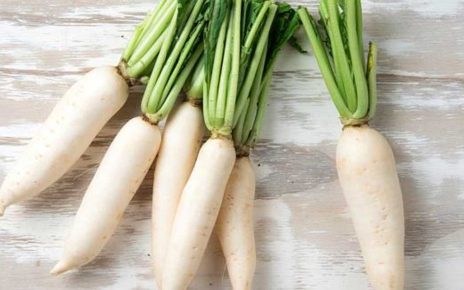With its roots in culture and craftsmanship, mezcal is one of the most complex and varied spirits in the world.
In the beginning was the agave. With most Mexican spirits—mezcal, tequila, and their less-well-known cousins comiteco, bacanora, and raicilla, at least—it all comes down to one spiky-leaved, tough-as-nails succulent plant that’s been harvested and turned into alcoholic beverages (as well as rope, paper, food, and many other things) since the time of the Aztecs. Known as maguey in Mexico, agave is the source of one of the few liquors that could be considered truly of the Americas: Native to North America, parts of South America, and the Caribbean, the agave was here long before national borders existed.
Mezcal, the definitive agave distillate (tequila is technically a type of mezcal) is having its moment in the U.S. But its origins unquestionably lie with the indigenous peoples of southern Mexico. Even the word mezcal derives from the Nahuatl mexcalli, which basically means “cooked agave.” But even in Mexico, the embrace of mezcal outside of its origin states came slowly. Gonzalo Goût, the 33-year-old co-owner and beverage director of mezcal destination Ticuchi in Mexico City, says, “For my grandmother, drinking tequila was something ranchers did. Then my mother and father’s generation started drinking tequila before a meal. And my generation moved to mezcal.” Goût offers between 150 to 200 mezcals on his list every day. As to what his grandmother would have thought of that, he says, “She probably would have said, ‘Wow, mezcal is so popular that you’re opening a whole bar for it?’” He laughs and adds, “Then she would have said, ‘Definitely too strong for me. I don’t get why you drink this!’”
As to what’s fueled mezcal’s recent rise in high-end bars around the world, Yana Volfson, the beverage director for chef Enrique Olvera’s restaurants in the U.S. (Cosme and Atla in New York City, Elio in Las Vegas, and the yet-to-be-opened Damian in Los Angeles), says, “I think mezcal is the story of the little engine that could. Today you have expensive bottles of mezcal in Paris, in Milan, in Tokyo and New York, yet it really remains a spirit of the villages and pueblos.” She cites a number of reasons for mezcal’s explosive growth in popularity around the world: “It sort of hugs the green movement of natural wine and this moment in wine and in food of having a deep appreciation of things that really come from small farms.”
That sentiment is echoed by Miguel F. Lancha of Washington, D.C.’s Think Food Group: “It’s the social idea of supporting local producers who aren’t giant corporations; there’ve been voices raised in favor of that for a while now.” And Graciela Ángeles Carreño, who oversees Mezcal Real Minero in Santa Catarina Minas, Mexico, and whose family has been making mezcal for generations, adds, “Mezcal’s particular aromas and flavors—which are both expected and a surprise—are the engine that motivates many people to continue getting to know and discover it. Mezcal is like inexhaustible art: It always surprises you and reinvents itself. When you drink it, it shows you the time, the passion, the dedication, the history of those who preserve this tradition.”
And yet for many U.S. drinkers—even tequila lovers—mezcal remains somewhat mysterious. It’s a distillate of agave, yes, but agave is a genus—there are hundreds of agave species, many of them not used for mezcal. Both Goût and Volfson suggest that it can be helpful to think about parallels to wine: In some sense, agave is to mezcal as grapes are to wine. Just as different grape varieties contribute different characteristics to wine, different species of agave contribute different flavors and aromas to mezcal. Of course, the analogy only holds so far. Wine is a fermented beverage and mezcal is a distilled spirit, for one thing. Also, Goût says, “Wine is very structured and has a structured language to it. Mezcal doesn’t have that. I’ve seen agave species called Ramirez just because they’re on Mr. Ramirez’s property.”
Making mezcal is, in essence, a straightforward process. Agave hearts, or piñas, which weigh between 80 and 200 pounds, are layered in a stone-lined pit or in an oven (horno) and roasted. Cooking converts the agave’s starches into sugars, imparts the smokiness that mezcal is known for, and cooks and softens the piña enough that its juices can be extracted. It’s a laborious process, done either by smashing the cooked piñas with wooden mallets or axes or else by crushing them under a tahona (a large stone wheel). Yola Jimenez of Yola Mezcal says, “Mezcal is still rural and handcrafted. People come to our palenque [a mezcal distillery] and are just shocked. It’s a 300-year-old process, the same now as it was when it started.”
After the juice is extracted from the roasted piñas, it’s fermented and distilled, typically in copper pot stills, and then bottled. But, Ángeles Carreño says, “In the case of traditional mezcal, the process is a very important factor in the flavor—for example, clay pot still or copper still, spring water versus well water, wild yeast versus controlled yeast strains, fermentation times—as is the style of the maestro palenquero. All of that differentiates one mezcal from a specific region, type of maguey, maestro palenquero, and production house from another.” In the end, good mezcal isn’t simple at all. In truth, it’s one of the most complex and varied spirits in the world.
And, unlike other spirits, which are distillations of grains or fruits, mezcal is made from a green plant. Regarding the flavors and aromas of artisanal mezcal, Volfson says: “Think about what stems of tulips smell like when they’re snapped fresh. Or what freshly picked spinach tastes like. Or the skins of cucumbers. Or maybe more culturally relevant flavors like grilled cactus. It’s smoky at first because cooked agave is caramelized, but when you start to learn about mezcal, you move beyond that first sip.” The species of agave itself also helps define flavor. Ángeles Carreño explains, “Each contributes a unique aroma and flavor to a mezcal. Broadly, I classify mezcals as being floral, herbal, woody, fruity, or spicy. For example, a largo would be in the herbal range while an arroqueño would be in the floral range. Even when produced under the same process, in the same palenque, and by the same maestro palenquero, the plant has a personality that imprints on each mezcal.”
Add to all that the fact that artisanal mezcal comes from small, family-owned palenques—which, as Yola Jimenez points out, may produce as little as three or four hundred bottles a month—and that there are hundreds of those distilleries scattered throughout Oaxaca (and, to a lesser extent, the states of Durango, Guanajuato, Guerrero, San Luis Potosí, Tamaulipas, Zacatecas, Michoacán, and Puebla as well), and that each maestro mezcalero at each palenque has their own way of doing things…well, the range of variables affecting the character of an individual mezcal starts to seem infinite. As Gonzalo Goût says, laughing, “Someone once told me, with mezcal, if you come to Oaxaca and you don’t leave more confused than when you arrived, you’re doing something wrong.”
But that, of course, doesn’t remove the pleasure of pouring yourself a copita-full and simply drinking it.
When Popularity Is a Problem
As mezcal’s sales rocket up, and as big players enter the business—Barcardí, Pernod Ricard, and Diageo have all invested in mezcal brands recently—concerns have risen about whether such steep growth is sustainable. Agaves require years to reach maturity, and unlike tequila, which relies on one type of agave from commercial plantations in Jalisco, mezcal is made from a range of agaves grown on small farms or from wild agaves, an even more limited resource. But how to keep production in check is an ongoing question. As Graciela Ángeles Carreño of Real Minero says, “It’s important to take into consideration how nature has financed mezcal for many years. We’re at a critical moment for the planet, where we must think very carefully about how our actions can favor disappearance or survival.”










